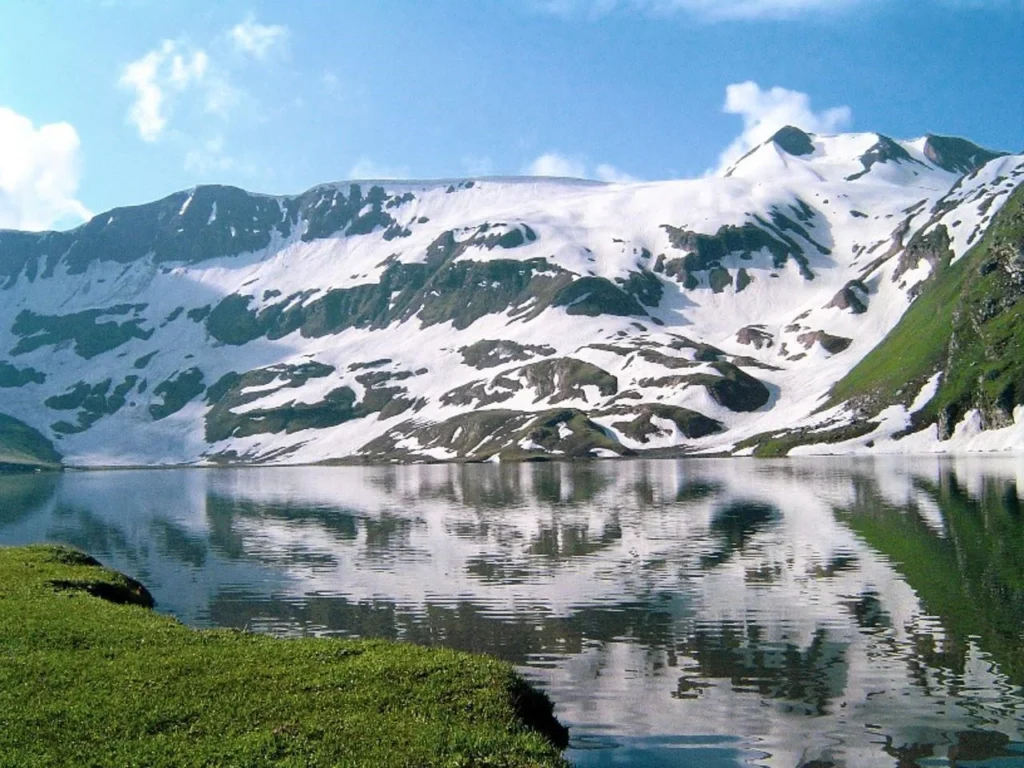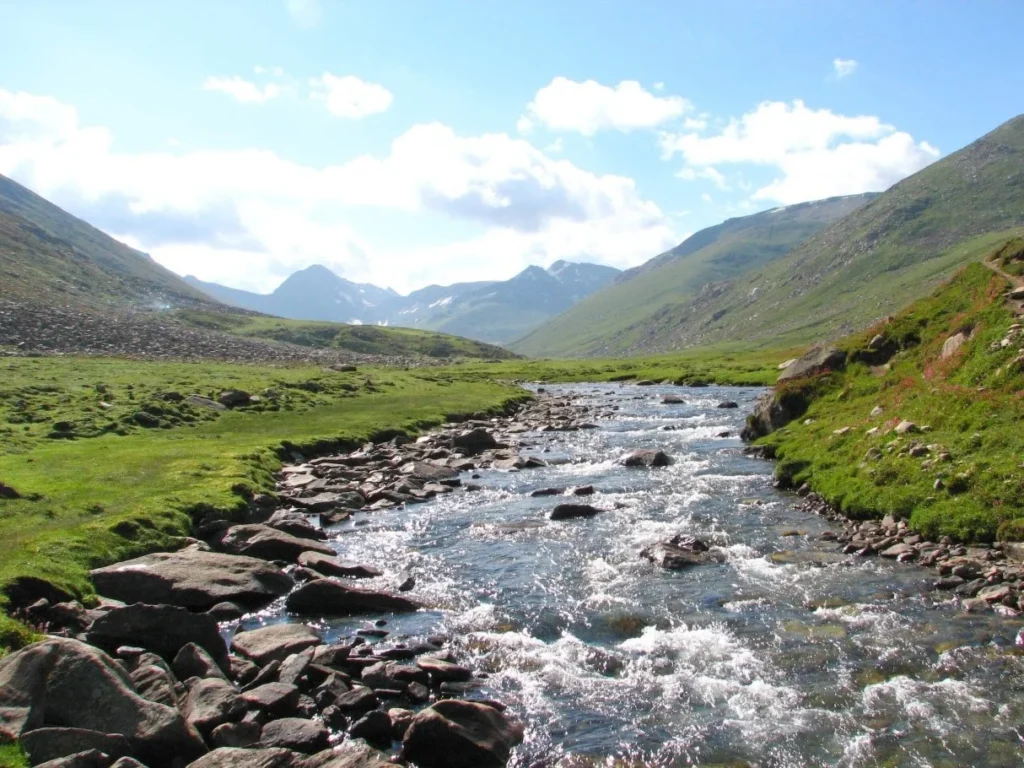
Have you ever dreamt of an untouched land, free from tourism, with towering mountains and fresh meadows?
Dudipatsar Lake is an unconventional site that is visited by tourists and trekkers who love nature in the northern part of Pakistan. This is in Lulusar Dudipatsar National Park and is amongst the most beautiful sightseeing point, the lake attracts many visitors from different parts of the world.
Dudipatsar Lake is located near Kaghan Valley, in Khyber Pakhtunkhwa, at the altitude of approximately 3,800 meters or 12,467 feet. The name Dudipatsar notably comes from the local languages whereby “Dudi” in English, stands for white and “Sar” means lake because of the white mountains that surround the lake.Top of Form

To reach Dudipatsar Lake you need to undertake the Dudipatsar Lake trek from Besal village near Naran. Lush forests, colorful grassland, wildlife and natural beautiful sceneries of the country side make it an instant hit amongst trekkers who want to have some challenge on their treks.
Seasons greatly affect the weather patterns and the topography of the land making it difficult in some cases to traverse across the landscape, as well as downright uncomfortable in other cases. If you like to trek on the grasslands, snowy area, or prefer a less crowded trek, this Dudipatsar Lake guide will tell you how best to plan the trip based on seasons.
Dudipatsar Lake location is in Lulusar-Dudipatsar National Park in Kaghan Valley. The Dudipatsar Lake location makes it to be distant and off the typical tourists’ trail, which makes it perfect for adventurous people.

Dudipatsar Lake location is in Lulusar-Dudipatsar National Park in Kaghan Valley. The Dudipatsar Lake location makes it to be distant and off the typical tourists’ trail, which makes it perfect for adventurous people.
To get to the lake, tourists need to start the tour from the Besal village near Naran and the tour entails crossing valleys, colorful meadows of wild flowers and steep rocks. It is in a remote area which enhances it is the beauty and the natural environment appropriate for trekking and other outdoor activities.
It is necessary to comprehend the Dudipatsar Lake weather during various seasons to avoid misadventures on the trip.
Dudipatsar Lake is breathtaking throughout the year; the scenic used in spring, the blossoms, and even the silent snowiest of winter. This guide looks at the conditions of the weather, the geography of trekking and the general feel of the lake in each season to aid in planning.
If you want to go for thrilling trek, enjoy the beauty of nature, looking for fascinating view or to enjoy the silence of nature then Dudipatsar Lake is a place to go at any time of the year. The seasons, which brings along a certain aesthetics of the lake, also alters the mode of utilisation and the general feel of the trip.
From the beautiful flowers in spring, summer’s crystal water, beautiful oranges in fall and snowy environments in winter to mention but a few; each time is always different from the other and makes ones visit very interesting.
Which season do you think would offer the perfect Dudipatsar Lake experience for you?
This is the best season when the flowers bloom and Dudipatsar Lake breaks the ice of the winter season.
Pros of Visiting in Spring:
Cons of Visiting in Spring:

It is during summer that people visit Dudipatsar Lake most because of the favorable trek and good weather. Due to its longitudinal position the typical daylight is long enough and therefore you have enough time to enjoy the view and wild flowers dominate the meadows with their colors.
It is recommended that you avoid the period between February to early March to avoid the rush of the tourists, but by the same time the climate is perfect.
Pros of Visiting in Summer:
Cons of Visiting in Summer:
Pro Tip: If you want to avoid many tourists crowds you should go there in June or at the end of August rather than in July.
If you are looking for amazing beautiful loneliness, colorful autumn and low temperature, then autumn is perfect for your Dudipatsar Lake tour.
Pros of Visiting in Fall:
Cons of Visiting in Fall:
Winter (December to February) at Dudipatsar Lake is best only if you like isolation and love ongoing snow; though it is quite beautiful, it is extremely cold. The whole area is covered with snow and the climate is very cold, sometimes below the freezing point, and everybody cannot help but be reminded of a giant refrigerator.
The place is unique, the lake completely freezes, and huge snowy peaks surrounding the lake even add some kind of fairy tale to the scene.
Trekking routes are also blocked or even covered by the snow layer; thus, avalanches, frostbites, and hypothermia are possible for an inexperienced explorer in the winter.

The regions that cover such village as Besal and other starting points of the trek, remain buried under parking snow throughout the season and thus remain unoccupied. Thus, only experienced people with adequate equipment and the knowledge of surviving in such conditions dare to climb Dudipatsar Lake in summer.
Visiting the park in winter is not advisable if not properly equipped for moderate to severe alpine climate and terrain.
Pros of Visiting in Winter:
Cons of Visiting in Winter:
Pro Tip: People who are frequently trekking should avoid winter season. But it is better to plan to come during spring, summer or during the fall time.
The best season to visit Dudipatsar Lake depends on the experience a tourist seeks. The best time of the year to go trekking is during summer, from June to August because you will see cleared trails and good weather. The lake at this time of the year is completely free of ice, the water looks incredibly gorgeous, turquoise; the meadows are green and beautiful.
For those who do not like crowded places and like to see the flowering landscapes it is better to choose spring and particularly May. The snow begins to melt and gives way to blooming wild flowers and new leaves on trees.
For a peaceful experience, or with the beautiful colors of the fall; it is recommended to visit in the early autumn, from late September to early October. The golden colors are quite fascinating thus an ideal place for photographers and anyone who wishes to be alone.
However, it is relatively wet and cold during December to February, and the trails here are not safe even for hikers, let alone casual tourists; the weather condition will also be severely unforgiving.
Nevertheless, Dudipatsar Lake can undoubtedly be considered as the pearl of the northern provinces, which enchants with its untouched exotic sceneries and attractive views in any season.
Plan your trip now and experience the magic of Dudipatsar Lake!